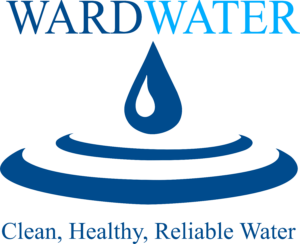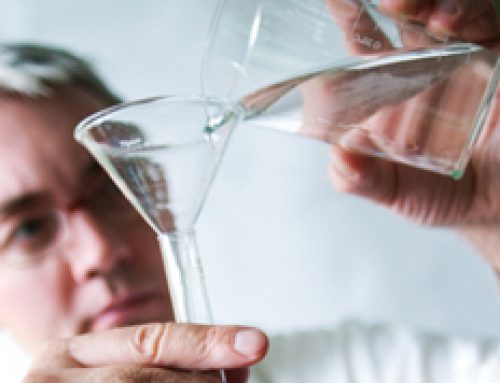What is Arsenic? We hear all about Arsenic being in our water. Recently, we’ve heard a lot about it being in the rice we eat. Most people know that it’s very toxic and not healthy to consume. But do you really know what Arsenic is or why it’s bad for you?
In this article we’ll take a look at:
-Just exactly what Arsenic is
-Where it comes from and how it gets in our water
-Why it’s harmful to our health
“What is Arsenic and how did it get in our water?”
That’s exactly what a client of ours from Gorham asked me a few weeks ago, after recently having her family’s water tested for health contaminants.
Their home’s Arsenic levels came back at 50 ug/L (parts per billion). The recommended cutoff for water safety is 10 ug/L.
Most people know that Arsenic is something that is poisonous and quite frankly, something we simply don’t want in our water. But from my experience, a great deal of people really have no idea what it is or where it comes from. This article is to help shed some light on the Arsenic mystery.
What is Arsenic?
Arsenic is chemical element.
Arsenic, like other elements, can be found alongside other minerals and metals in soil and underground bedrock. It can also be found in the plants we eat, the air we breathe and the water our families drink.
Arsenic is extremely poisonous to humans and most pets and animals, especially at higher concentrations. The health risk factors that determine the risk for Arsenic exposure include:
- Concentration of Arsenic consumed
- Length of time exposed to the contaminant
- Age and certain predispositions to health related issues
Arsenic has no taste, no smell and has no color or visual presence. I can’t describe how often we have tested a client’s home water supply which has almost perfect taste and no smells whatsoever…only to find it’s loaded with Arsenic.
Arsenic is virtually undetectable without proper testing. If you haven’t done so we strongly recommend having your water tested for Arsenic levels.
How did Arsenic get in my Water?
Agricultural and Industrial Practices
Surprisingly, Arsenic is still used in many agricultural and industrial processes today.
A great deal of the industrially used Arsenic found in the United States is utilized to preserve wood products. It’s used in fertilizers and animal feed operations. It’s also commonly used to manufacture certain metals and highly valuable semi-conductor materials for electronics.
In addition, it can be found in soaps, prescription drugs and even paint and dye production.
Like other industrial byproducts, Arsenic can make its way into our watershed systems – the same exact water that eventually travels underground and feeds our home’s private wells. This type of water contamination makes a much smaller percentage of the Arsenic contaminated water in the US. Underground mineral release is far more common.
Underground Soil & Bedrock Release
The most common cause of Arsenic finding its way into a home’s private water supply is soil and bedrock mineral release.
Before reaching a home’s well supply, groundwater passes through both soil and/or bedrock veins (cracks in the bedrock) that feed a well. Anything water touches along this path is a prime “hitchhiker” candidate and is more than happy to jump aboard the drinking water parade.
Sometimes it’s Iron that comes along for this ride. Sometimes it’s calcium hardness. Many times toxic substances like Arsenic and Uranium get to be the lucky winners of this competition.
What finally ends up in your home’s individual water supply all depends on the actual rock and soil your water came across throughout it’s long underground journey.
Why is Arsenic Bad for me?
According to The Agency for Toxic Substances & Disease Registry, Arsenic has been linked to several cancerous and non-cancerous health concerns.
Forms of Cancer Caused by Arsenic:
- Lung cancer
- Cancer of the nasal passages
- Liver, kidneys and prostate cancer
- Skin cancer
Non-cancerous Effects of Arsenic
- Increased risk for heart disease and Diabetes
- Damage to the kidneys
- Vomiting, diarrhea, nausea and stomach pains
- Partial blindness
- Thickening and/or numbness of the skin
What to do
I think it’s extremely important for us to emphasize that we are not physicians. If you have any concerns at all about the health effects of Arsenic, we recommend speaking with a Doctor who has experience dealing with the symptoms and testing practices for Arsenic toxicity.
Dr. Peter Knight from Healthy Living Health Care, in Falmouth Maine, has had extensive experience working with patients who have come in contact with various toxins, including Arsenic and Uranium. The HLHC practice is a terrific resource for anyone looking for information on health and well being – especially those seeking a natural and practical approach to their health care. Their office number is (207) 619-8393.
Arsenic Removal
Our expertise is in making sure your water is clean and safe to drink. Removing Arsenic from water supplies is a large part of what we do at Ward Water. Whether it is for water Arsenic testing or for Arsenic removal systems, we can help.
Please feel free to contact our office. We’ll be happy to offer our help or advise any way we can.
Additional Resources
Basic Info on Arsenic in Maine
Arsenic Resources from The EPA
Arsenic 101 | Is my Water Safe if it has Arsenic?





